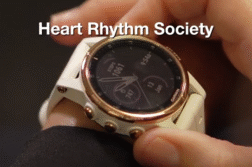SAN DIEGO, Calif. (Ivanhoe Newswire) — This year 140,000 people will die from a stroke. It happens when blood flow to the brain is blocked. A new procedure is opening up pathways and helping millions of people live longer, stroke-free, TCAR.
In the next 40 seconds, someone will have a stroke.
Every four minutes someone dies.
It can be caused by a blockage in your heart, legs, or the main arteries in your neck.
Mahmoud Malas, MD, MHS, RPVI, FACS, Professor in Residence, Vice Chair of Surgery For Clinical Research and Chief, Division of Vascular and Endovascular Surgery at University of California San Diego, Health System explained to Ivanhoe, “The carotid arteries are the two main arteries that run in the neck and profuse the front of the brain.”
Traditional stenting uses a catheter to run a stent up from your arm or groin and can be risky.
“As we go in, we can break little pieces of plaque from the aorta near the heart and cause a stroke,” elaborated Dr. Malas.
That’s what UC San Diego vascular surgeon Mahmoud Malas feared would happen to Ricardo Levy after an ultrasound revealed plaque in his carotid artery.
Dr. Malas used a combination of procedures to lower the risk for Ricardo. First, he performed a transcarotid artery revascularization or TCAR.
“By making a small incision at the base of the neck, we directly can deliver the stent into the carotid artery,” clarified Dr. Malas.
Then he reversed the blood flow into the brain.
Dr. Malas illustrated, “When we are ready to deploy the stents, we clamp the carotid artery right here.”
“The blood will go from the other side of the carotid and get filtered through that filter right here, and then back into the femoral vein, so the patient doesn’t lose any blood. But essentially, no debris can go back up into the brain, and we are able to minimize that risk of stroke,” demonstrated Dr. Malas.
“This is probably one of the coolest things we do today in vascular surgery,” added Dr. Malas.
Ricardo thinks so too.
“There’s not even a scar. Maybe with a microscope, you can find the scar,” shared Ricardo.
The flow reversal has been approved by the FDA.
Currently, it’s used for patients who are at high risk for complications, including those who have at least 50 percent blockage of their carotid artery or other neurological symptoms.
Contributors to this news report include: Cyndy McGrath, Executive Producer; Marsha Lewis, Field Producer; Rusty Reed, Videographer; Roque Correa, Editor.
To receive a free weekly e-mail on Medical Breakthroughs from Ivanhoe, sign up at: http://www.ivanhoe.com/ftk
MEDICAL BREAKTHROUGHS
RESEARCH SUMMARY
TOPIC: TCAR: REVERSING BLOOD FLOW TO PREVENT STROKES
REPORT: MB #4750
BACKGROUND: Stroke is the third leading cause of death in the United States, and more than 140,000 people die each year from stroke. It affects the arteries leading to and within the brain and occurs when a blood vessel that carries oxygen and nutrients to the brain is either blocked by a clot or bursts. When that happens, part of the brain cannot get the blood and oxygen it needs, so it and brain cells die. A stroke caused by a clot obstructing the flow of blood to the brain is called an ischemic stroke, and a blood vessel rupturing and preventing blood flow to the brain is called a hemorrhagic stroke. A TIA (transient ischemic attack), or “mini stroke”, is caused by a temporary clot. High blood pressure is the most important risk factor for stroke.
(Source: http://www.strokecenter.org/patients/about-stroke/stroke-statistics/ and https://www.stroke.org/en/about-stroke)
NEW PROCEDURE LOWERS RISK: Transcarotid artery revascularization (TCAR), uses a device to briefly reverse the direction of blood flow from the brain while the physician operates, resulting in a lower risk of stroke during the procedure. “This is a promising treatment and the stroke rates have been reported as low as 1.4 percent in trials,” says Nicholas Osborne, MD, an assistant professor of surgery at University of Michigan. TCAR is described as a hybrid of what’s already available to treat a narrowed carotid artery, but with a twist. After reversing the blood flow away from the brain, the surgeon directly stents from that position, avoiding the risks that come from traveling up from the femoral artery, the aorta and up to the carotid artery. “In open vascular surgery, it’s not uncommon for us to let arteries back bleed to wash them out,” Osborne says. “This was actively applying that open surgery technique to an endovascular procedure.”
NEW TREATMENT REDUCES DEATH AND DISABILITY: A new treatment is showing to cut the death rate from major ischemic strokes in half. The New England Journal of Medicine published the results of the trial which showed reductions in stroke-related disability. The researchers studied 316 people who were diagnosed with a major ischemic stroke. In the test group, high-tech equipment and imaging was used to remove the clot through the patient’s blood vessels, restoring blood flow to the brain. Researchers found a 50% reduction in the overall death rate among the patients who were treated with this procedure called endovascular thrombectomy. “This is the most significant and fundamental change in acute ischemic stroke treatment in the last 20 years,” says Dr. Michael Hill, senior author of the study and a professor at the University of Calgary’s Cumming School of Medicine.
(Source: https://www.heartandstroke.ca/articles/research-breakthrough-to-revolutionize-stroke-treatment)
FOR MORE INFORMATION ON THIS REPORT, PLEASE CONTACT:
MICHELLE BRUBAKER
UC SAN DIEGO HEALTH
858-249-0416
If this story or any other Ivanhoe story has impacted your life or prompted you or someone you know to seek or change treatments, please let us know by contacting Marjorie Bekaert Thomas at mthomas@ivanhoe.com




